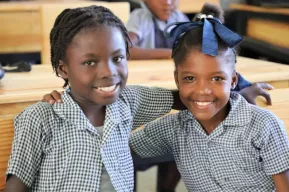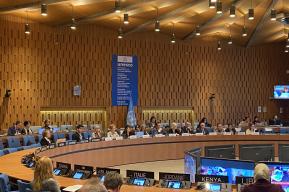News
Gender-based violence in schools a significant barrier to the right to education
Worldwide an estimated 246 million children experience school-related violence every year. Unequal gender norms and power relations are a key driver of this violence, manifesting itself as bullying and physical abuse, corporal punishment, sexual and verbal harassment, nonconsensual touching and other forms of sexual assault.
School-related gender based violence (SRGBV) as ‘a serious barrier to achieving universal education’ was the subject of a panel discussion at the 60th Annual Conference for the Comparative and International Education Society (CIES) in Vancouver, March 6-10.
Jenelle Babb, from UNESCO’s Section of Health and Education, was joined by representatives from USAID, University College of London’s Institute of Education, Concern Worldwide, Global Women’s Institute, and Promundo, to discuss gaps in knowledge around SRGBV, its impact on children’s well-being and educational outcomes, and effective solutions.
Under the theme, Envisioning schools free from gender-based violence: Using evidence for action, the panel explored the challenges and opportunities in research, programming, monitoring and evaluation of SRGBV; and some of the ways policy-makers and practitioners can address the issue.
More work needed to promote safe spaces
Babb told panel participants that while the subject of SRGBV has become more prominent in recent years, evidence shows that more work is needed on policy and regulatory frameworks that promote safe and inclusive learning spaces and a zero-tolerance approach to violence.
“We need to consider strengthening linkages among the many partners working on issues of school violence and childhood violence, applying a ‘gender lens’ to violence and interpersonal relationships and dynamics within the school setting,” she said.
Natko Gereš of Promundo-US said the education sector had a critical role to play in empowering all learners with transformative education that examines gender and social norms and power dynamics. He noted that violence is a defining feature in the lives of many men and boys in low and middle-income countries, shaping their concept of masculinity and their relationships with women.
“We need to understand how to create safe, violence-free learning environments where boys and girls have equal opportunities,” Geres said.
Sustainable Development Goals serve as framework
Dr Manuel Contreras Urbina of the Global Women’s Institute observed that: “The SDGs serve as an international framework against which countries will be obligated to develop evidence for reporting on indicators and targets on gender based violence”
In addition to learning new evidence on SRGBV policy and programming interventions from low and middle income settings, the session also highlights forthcoming resources including the new USAID SRGBV conceptual measurement framework and toolkit, and the soon-to-be-released Global Guidance on addressing SRGBV, jointly published by UNESCO and UN Women.
The panel discussion at the annual CIES conference was an effort of the Global Working Group on SRGBV, co-convened by UNESCO and the United Nations Girls’ Education Initiative (UNGEI).
Links






